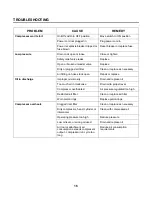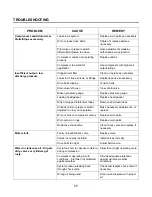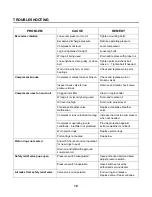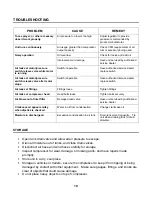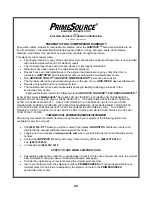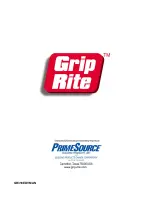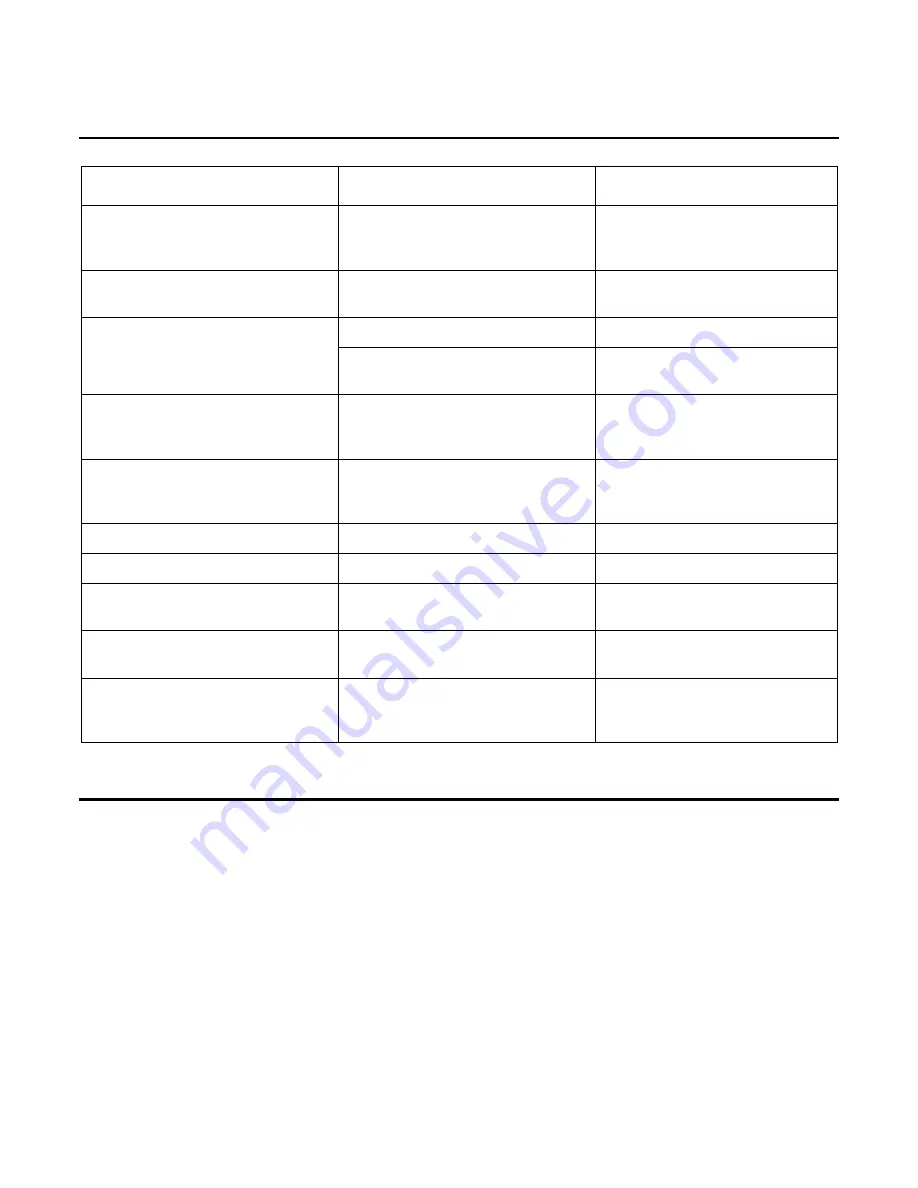
TROUBLESHOOTING
PROBLEM CAUSE REMEDY
Tool, sprayer, or other accessory
doesn't work properly.
Air pressure too low or too high
Adjust regulator to provide
pressure recommended by
product manufacturer.
Unit runs continuously
Air usage greater than compressor
output capacity
Check CFM requirements of air
tool or accessory being used.
Oil level low
Check for leaks, and add oil
Noisy operation
Internal wear or damage
Have unit serviced by authorized
service dealer.
Air leaks at motor/pressure
switch release valve while motor
is running
Switch inoperable
Have authorized service dealer
replace switch
Air leaks at motor/pressure
switch release valve after motor
stops.
Switch inoperable
Have authorized service dealer
replace switch
Air leaks at fittings
Fittings loose
Tighten fittings
Air leaks at compressor head
Head bolts loose
Tighten bolts securely
Air blows out of inlet filter
Damaged reed valve
Have unit serviced by authorized
service dealer
Crankcase oil appears milky
when dipstick is checked
Water in oil from condensation Change
crankcase
oil.
Moisture in discharge air
Excessive condensation in air tank
Drain tank more frequently. Tip
unit when draining tank to drain
all water.
STORAGE
Open tank drain valve and allow all air pressure to escape.
Drain all moisture out of tanks, and close drain valves.
Disconnect air hose and wind hose carefully for storage
Inspect compressor for wear, damage, or missing parts, and have repairs made
promptly.
Store unit in a dry, cool place.
Storage in vehicles or trailers - secure the compressor to keep it from tipping or being
damaged by contact with other equipment. Make sure gauges, fittings, and knobs are
clear of objects that could cause damage.
Do not place heavy objects on top of compressor.
19












